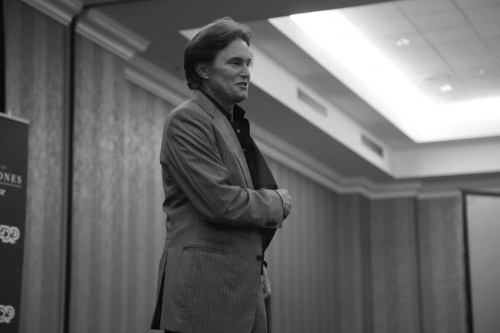Media mistreats transgender community
News coverage of Bruce Jenner’s future sex change reveals bigger issues
ELISABETH SMITH
CONTRIBUTOR
Recently news outlets have been covering stories regarding people who identify as transgender in a speculative manner. Celebrities such as Bruce Jenner, who has not officially said anything about the transition, are ridiculed in tabloid articles and insensitive stories.
Even Brad Pitt and Angelina Jolie’s son John Jolie-Pitt, who was born female but identifies as male, is subject to the insensitive criticism, even though he is only eight years old.
Tabloids and respected news outlets alike are printing stories that put the transgender community in the spotlight, making them seem like a novelty instead of average people who are dealing with very personal issues.
Why do these publications choose to run stories about people who identify as transgender in such a sensationalized matter?
Susan Chira, a New York Times editor, was quoted about printing two stories about Bruce Jenner’s alleged transition in a recent article.
“We thought it put the Jenner story in the context of a new public and cultural focus on transgender issues,” Chira said.
But at what point do journalists go from creating a discussion about transgender issues to exploiting one celebrity’s personal choice to identify as a man or a woman?
Senior and PRIDE President Brent Allman believes that these people deserve privacy from invasive media just as much as anyone else.
“With Bruce Jenner [stories] it’s turning into a big joke,” Allman said. “This person could be going through a traumatic experience, and they need support and privacy.”
One of the major issues with these transgender articles is terminology.
While the appropriate language seems foreign to those outside of the transgender community, it’s important for everyone, especially journalists, to take care in using the correct language.
The New York Times did a two-part series on the issue titled, “Times and Transgender Issues” covering the topics of pronouns and Bruce Jenner.
In the article they cited the Times’ policy on using gender neutral pronouns like “they”, “it”, and a newly invented pronoun “xe”.
Allman urges people to learn the correct terminology if they are going to speak about the transgender community.
“I feel that the media doesn’t have a good grasp on transgender terminology,” Allman said. “You need to be connected with the community to understand how to talk about them.”
The Gay & Lesbian Alliance Against Defamation (GLAAD) is taking a step to help educate the media about the transgender community and the LGBTQ community as a whole.
On their website there are resources for journalists like a media reference guide as well as explanations about gender identity and the transition process.
While this resource is available to everyone, the media still makes many mistakes that can be very offensive to the transgender community.
The use of birth names creates controversy because the media appears to be discrediting a person’s transition by not using their chosen name.
Freshman Abigail Barnes does not believe media outlets are handling these stories correctly either.
“It’s hard because a lot of the articles I’ve seen are trying to be sensitive, but the fact that they’re drawing so much attention to the issue ostracizes the transgender community,” Barnes said.
People from the transgender community are continually portrayed as outsiders in our society. The media perpetuates that image, influencing the world to only see these individuals in a different light than the rest of the world.
Barnes believes the members of the transgender community are only given certain identities in the media.
“Most of the time transgender people are portrayed as the victim or in a sex role,” Barnes said. “Even if people are acting like they accept [this community], they aren’t changing any stereotypes.”
As president of the PRIDE Club, Allman, helps the USD campus understand LGBTQ issues better by being part of the Rainbow Educators.
“Self education is the most important thing [for understanding these issues],” Allman said. “Take an interest in how you’re talking and engaging with the community.”
Furthermore, Allman believes that Rainbow Educators has really helped him understand this topic in ways he hadn’t before joining.
“[Rainbow Educators] has given me a lot more knowledge,” Allman said. “I’ve gotten good feedback and people can always request workshops on transgender issues.”
The PRIDE club also brings awareness to the transgender community with their event, Supreme Drag Superstar. The event helps educate the campus on the transgender community while bringing levity to the situation.
“The show brings fun and lightness to the issue and performers showcase a different part of themselves,” Allman said. “It’s one of the most loving and positive events of the year.”
Going forward, it is important to look at media coverage with a more critical eye when investigating the very personal matters of celebrities’ lives.
Furthermore, it would benefit us all to learn the correct terminology when addressing the transgender community.
